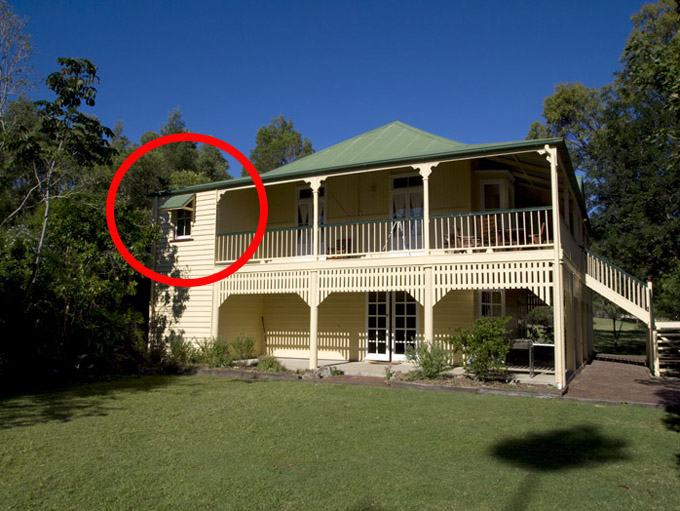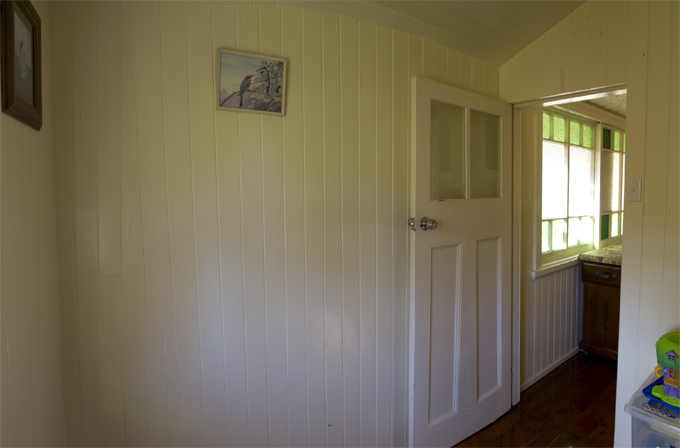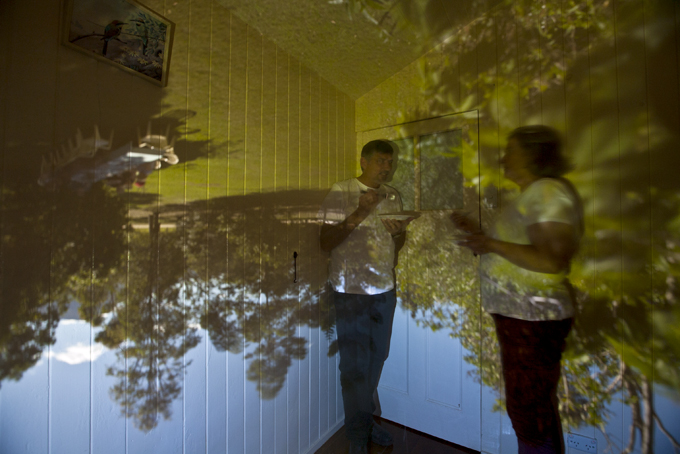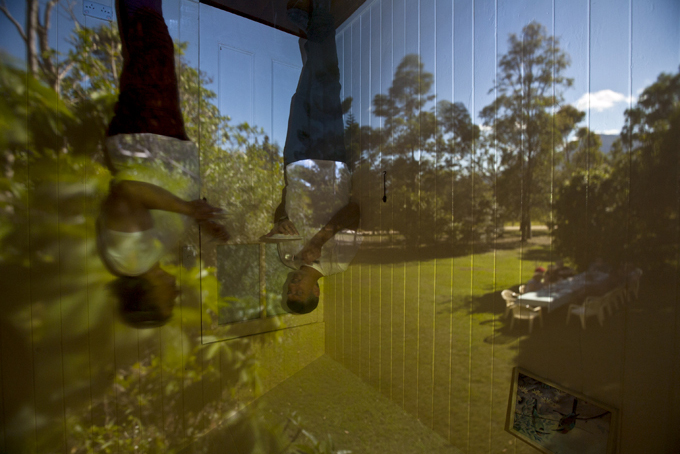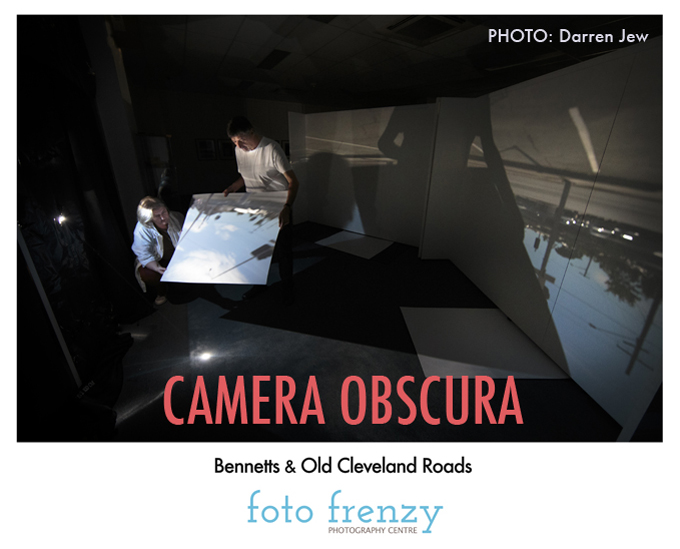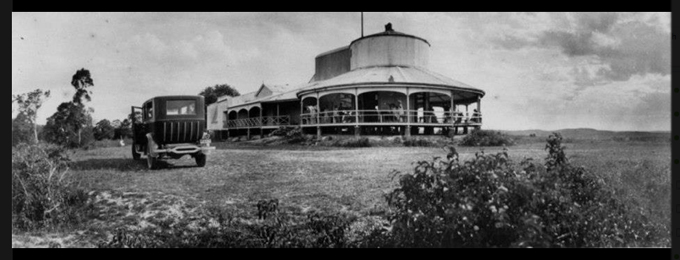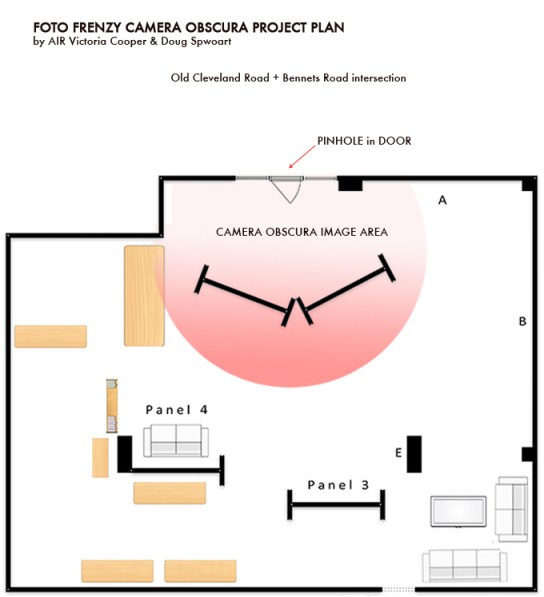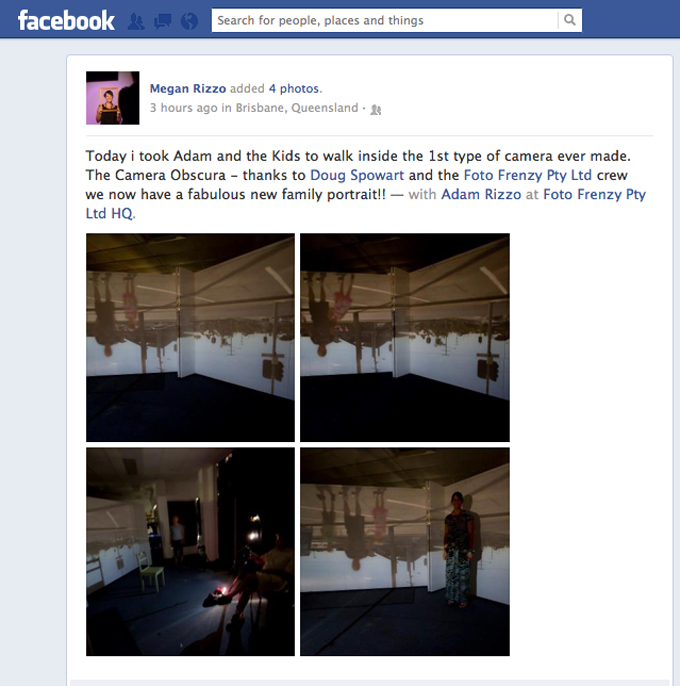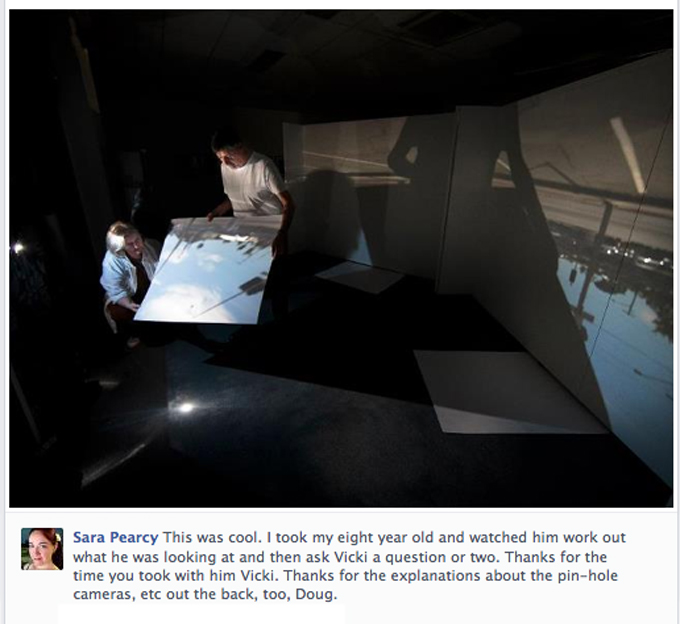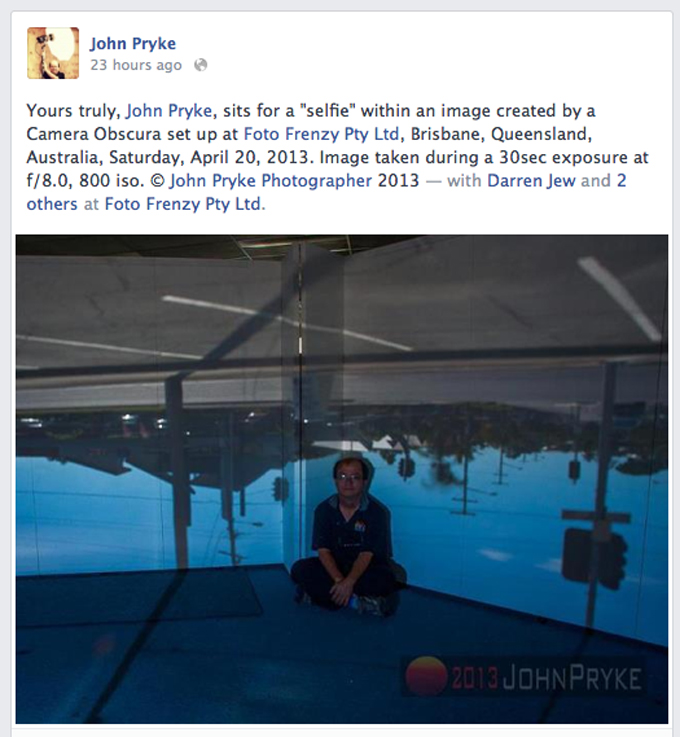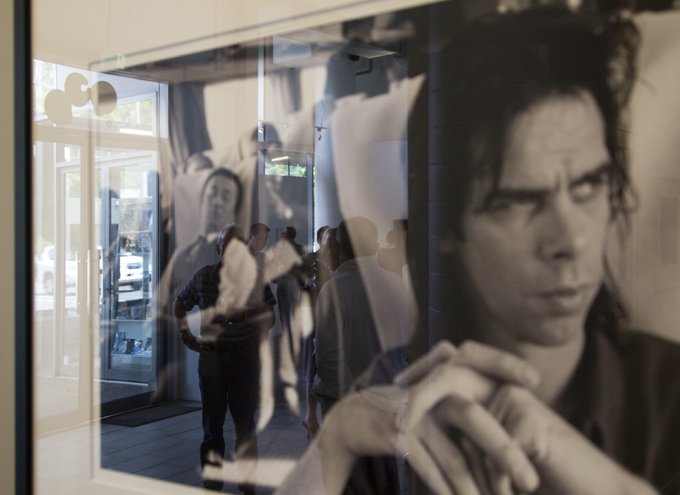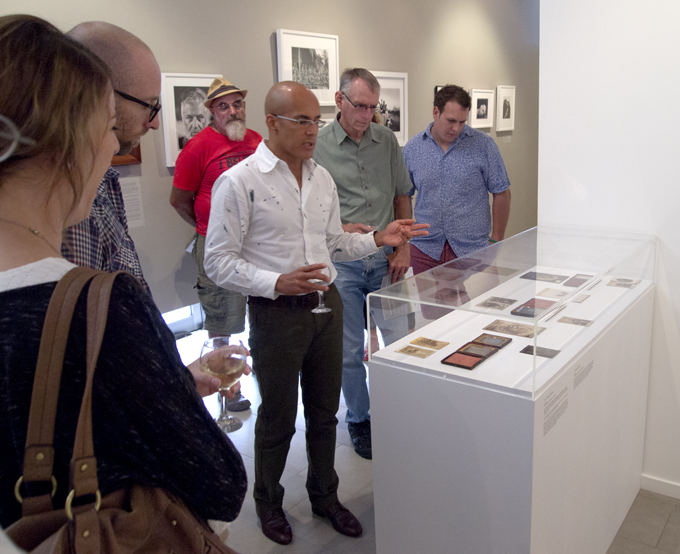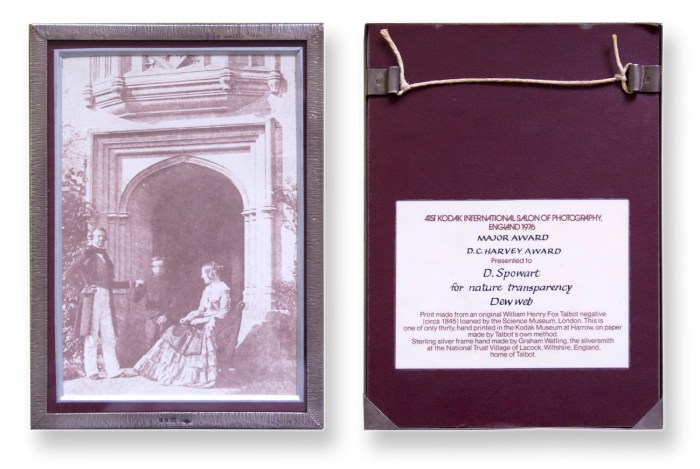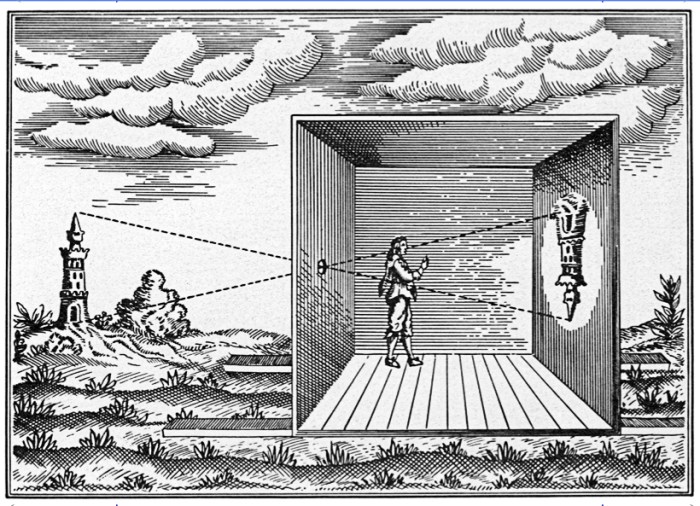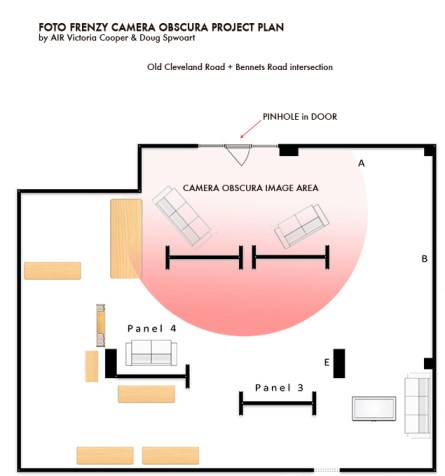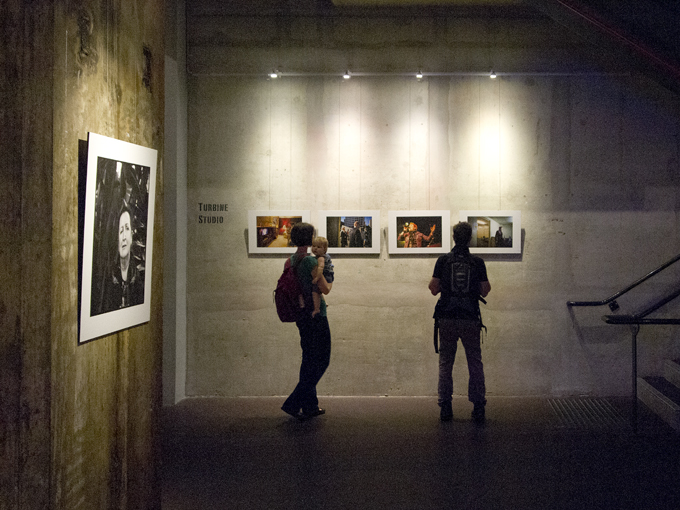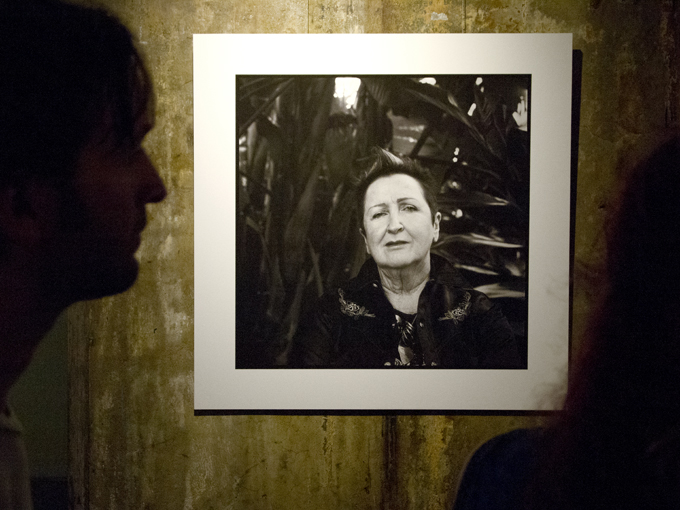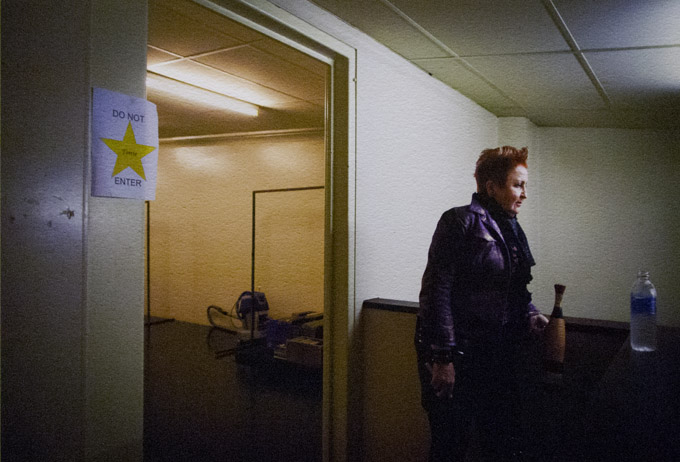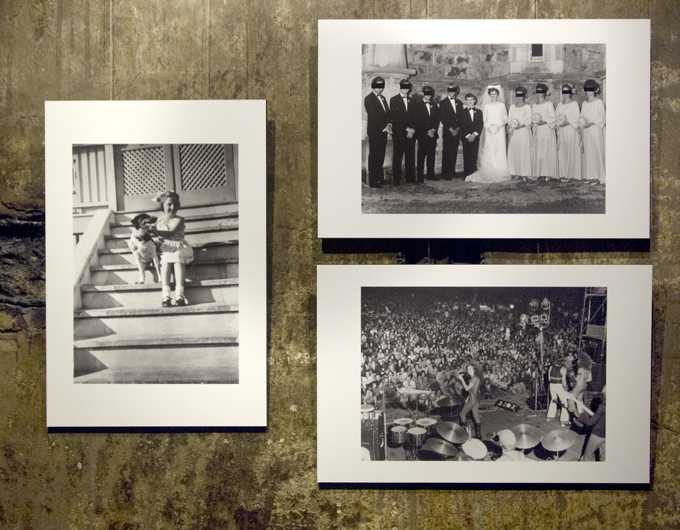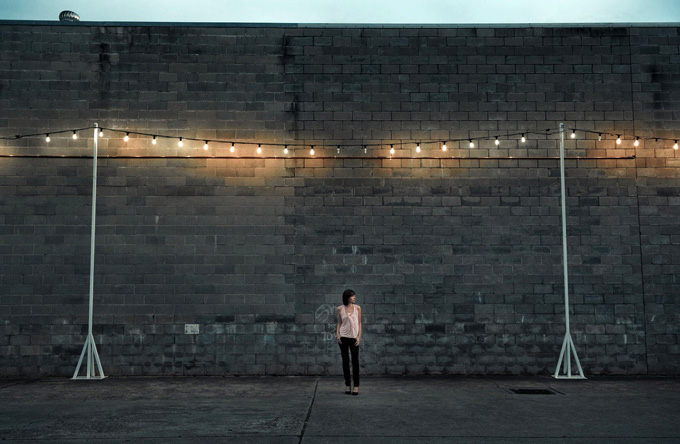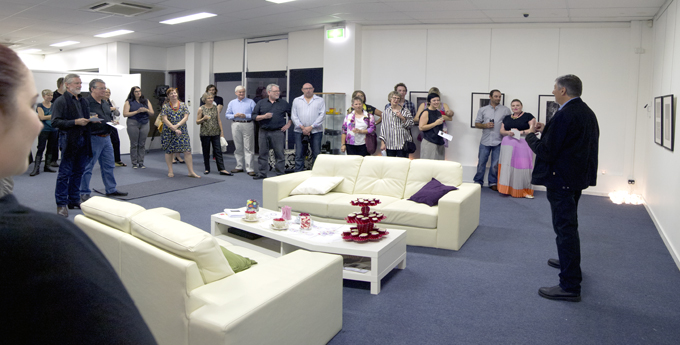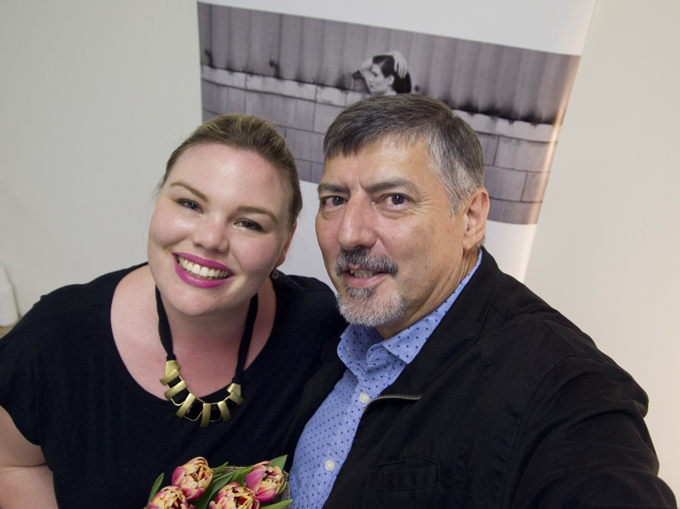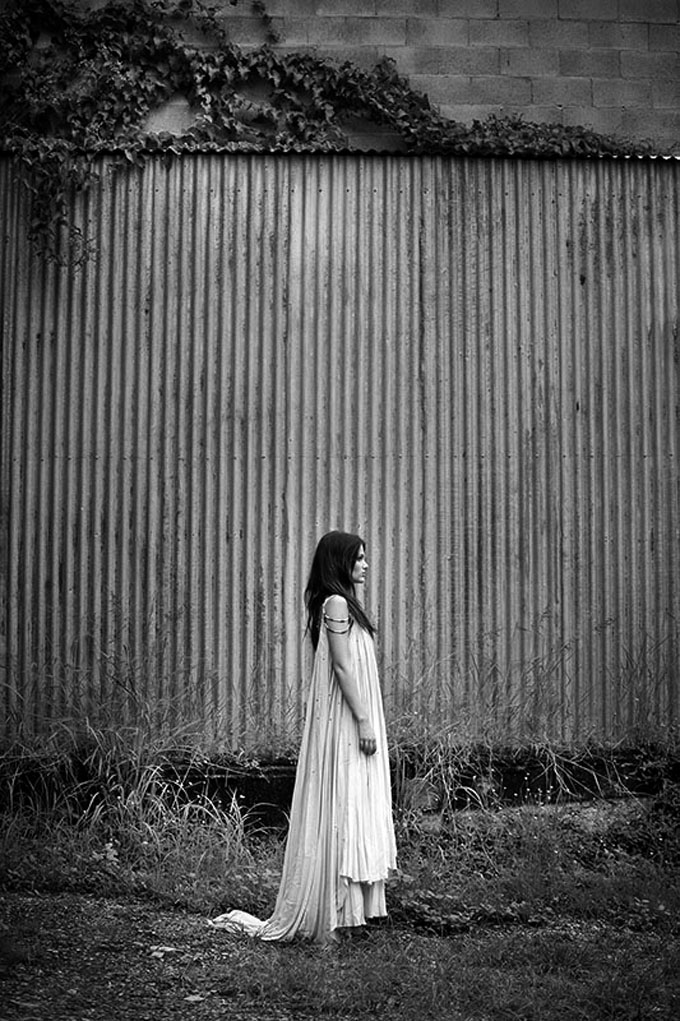Archive for April 2013
CAMERA OBSCURA + Pinhole Event @ Foto Frenzy: A Report
Since the year 2000 we have been making large-scale room camera obscuras. These have been made as part of visual research for our Place Projects. Usually we document the process and the images form a narrative for inclusion in photobooks and exhibitions. In 2009 we launched WINDOW/s, a limited edition photobook of 9 copies, along with an exhibition of the 9 camera obscura images @ the Queensland Centre for Photography.
SEE the book as an Adobe Flash Pageflip HERE
In our Place Project work we have found that the camera obscura connects us directly with the place or site that we are working in. We have found that anyone witnessing the place-specific camera obscura responds enthusiastically this natural phenomenon. Time spent inside the camera obscura evokes a sharing of different perceptions: of the visual, of memory and of experiences in the lives of each visitor. So we decided that we should create a camera obscura as part of our Foto Frenzy artist in residence.
As a result of a conversation with a past QCA student of Doug’s from the 1980s, photographer John Pryke, through some great research on the internet, found that not far down the road was the site of an historical camera obscura on Whites Hill.
.
.
The view from the front entry of Foto Frenzy was selected as its outlook is of the defining feature of this place – the major intersection of Bennetts and Old Cleveland Roads Coorparoo. A plan was created, the room blacked out with thick black agricultural plastic, a light admitting hole of around 12 mm was made and fitted in the door of the building, and screens arranged inside onto which the image could be projected.
.
Saturday the 20th of April was a bright sunny day with occasional clouds and the 40 or so visitors witnessed the wonders of this simple device. Many brought cameras with them to make images, some brought family members including children – all, as we hoped, were taken by the visual experience of being ‘IN’ a camera, one which did not even require a lens.
As artists in residence working with the Foto Frenzy / Brisbane Camera Hire Team, we were around some amazing technology and people with special knowledge. Director Darren Jew produced his Canon EOS 1D and a high speed 12mm lens for the cover image of this post. If you’ve not been in a ‘lensless’ camera obscura you will not be aware of how dark the images is – usually it takes several minutes for your eyes to adjust to see what is going on, it is that dark. There are perhaps only a few movies of camera obscura images that have ever been made as it requires specialized cameras and equipment. Darren Jew offered to wind up the ISO of his latest camera and at 40,000 ISO we were able to create a movie of the impromptu performance of our antics outside the building as – ‘Vicky and Doug do a Selfie’.
SEE the movie here ….
.
What fascinated us was the excitement and enthusiasm for the project, much of which was posted on Facebook soon after the event. With the permission of the respondents we have posted some of their images and words in the screen grabs that follow …
.
SEE more of John’s photographs on his blog: <http://johnprykephoto.blogspot.com.au/2013/04/camera-obscura.html>..
.Additionally the event included a presentation of some of our pinhole cameras, pinhole making techniques, and discussions about how to make pinhole images with SLR and DSLR cameras. Most importantly we encouraged participants to make and enter photos made on April 28 in the 2013 World Pinhole Photography Day event.
Thank you to the participants, the Foto Frenzy / Brisbane Camera Hire team, in particular Darren Jew and Jacob Schneider, for helping to make this a successful event
.
All photographs and texts © of the authors 2013.
This work is licensed under a Creative Commons Attribution-NonCommercial-NoDerivs 3.0 Unported License.
.
PHOTO TREASURE: The QCPs ‘Treasures: The art of collecting’
REVIEW: Treasures: The art of collecting
.
I’m an obsessive collector. It’s a big problem because I’m finding it difficult to store everything …
Martin Parr talking about his book collection 1.
Collecting photographs and collecting collections is the subject of the current exhibition at the Queensland Centre of Photography. 72 photographic works on loan from 23 collections both significant and personal, fill the exhibition space. The works represent a wide selection of the history of the medium, the range of themes pursued by photographers and the stuff that collectors collect.
The exhibition was curated by QCP Director Maurice Ortega and was drawn from the contacts, colleagues and members of the QCP fraternity. Works from significant collectors like Daryl Hewson and Fred Hunt were prominently featured in the show. Other works came from the QCP’s own collection, many of which have interesting provenance, were gifts to the Centre, or to members of QCP photography fair delegations travelling overseas.
Each work has a unique story not only of the photograph’s making but also of the collector’s possession and the story of ownership. To pass on these dual narratives each work is accompanied by a comprehensive didactic panel that provides a connection with why the work was collected and its meaningfulness for the collector.
.
On Sunday 14th April Maurice Ortega gave a floor talk about the Treasures. He discussed the idea and practice of collecting generally and then walked through the space drawing attention to selected works–their owners and any special stories around their provenance.
Ortega spoke of the importance of collectors and how they can support artists at all levels of their careers. He noted that in Australia so many art photographers make a fine start in their professional practice but so often slip from view due to the inability for them to derive sufficient income to survive. He lamented the lack of a passion for collecting within Australia citing the success of the American scene. A video presentation in the gallery shows, as an example, the collection of Steven Reinstein and it’s presentation within a home. It is a grand statement about how ‘amazing’ the personal accumulation of art can be.
In Ortega’s catalogue statement he pays great respect to the collector by stating that:
… collectors of every kind should be celebrated and emulated; first for directly supporting the artist, second for maintaining cultural diversity and thirdly for keeping art thoroughly democratic by keeping it grounded on its domestic domain, that of everyday life.
The Treasures exhibition may be a significant look into the art of collecting but it has many other valuable outcomes. It presents to visitors an array of photographic materials, techniques, themes and makers, the like of which has not been shown in this region for some time. It highlights the importance of collection and possession and the link that it provides for a supporting structure within art photography. And it must also surprise the viewer of the exhibition with the spectacular range of art photography that exists out in the wilds of the private collector.
Furthermore this exhibition is a curatorial tour de force and is an example of the significant role that the QCP plays within Queensland–perhaps even Australia, in the provision of true and relevant exhibitions of what the art of photography is, and what can be…
.
Dr Doug Spowart
For images and more details of the exhibition SEE http://www.qcp.org.au/exhibitions/current/album-791/28
A personal postscript: Like Martin Parr I’m an obsessive collector of photographs, photographica, photobooks and photo ephemera. I was asked by Maurice for a piece from my collection for the Treasures show–I selected a calotype print made from a Henry Fox Talbot negative c1843. Printed by author, historian and Kodak Museum Curator Brian Coe in 1976. The provenance of the photograph was that it was an award won by me in the Kodak International of Photography in that year. Due to difficult display requirements it was decided not to include the work in the Treasures show.
1. Badger, G 2003, Collecting Photography, Mitchell Beazley Ltd., London.
.
Images of the exhibition installation and text by Doug Spowart .
This work is licensed under a Creative Commons Attribution-NonCommercial-NoDerivs 3.0 Unported License.
.
ADVANCE NOTICE: View a Camera Obscura + Pinhole Event ……….. @ Foto Frenzy 20 April 2013
.
SEE THE REPORT ON THIS EVENT ‘CLICK HERE’
.
Foto Frenzy (Brisbane) Camera Obscura and WPPD prelude: 20 April 12 Noon to 4.00pm
On this day the photographers Cooper+Spowart will create a camera obscura in the foyer of Gallery Frenzy for visitors to view and make photographs in. Additionally attendees will be advised on how to convert Digi and Film cameras into pinhole devices to participate in World Pinhole Photography Day on 28 April, 2013.
Foto Frenzy is situated @ Unit 3 – 429 Old Cleveland Road, Coorparoo. (Next to Brisbane Camera Hire)
HERE IS THE PLAN
The foyer of Foto Frenzy will be blacked out – a pinhole will be placed in the window facing Bennetts Road. Screens will be set up inside the gallery area to image the light from outside.
.
The camera obscura will be available for viewing from 12 Noon until 4.00pm and we are hoping for a sunny day as that will yield the most visible best results.
At 1.00, 2.00 and 3.00pm Vicky and Doug will demonstrate how to convert your Digi or Film SLR into a pinhole camera. Bring a plastic body cover if you have one, it may be able to be drilled for pinhole insertion. Materials will be available for you to make your own pinhole.
And at 1.30, 2.30 and 3.30pm Darren will demonstrate wet darkroom pinhole camera shooting (with a simple box & paper) and print processing in the NEW Foto Frenzy darkroom.
Instructions for preparing and uploading pinhole photos to the World Pinhole Photography Day site will be available.
 http://www.pinholeday.org/events/?event=2629
http://www.pinholeday.org/events/?event=2629
.
.
IT IS A FREE EVENT BUT YOU MUST BOOK AT THE EVENTBRITE SITE
 http://pinholefrenzy-eac2.eventbrite.com.au/
http://pinholefrenzy-eac2.eventbrite.com.au/
.
HEATHER FAULKNER’s ‘A Matter of Time’ Exhibition
A Matter of Time – Heather Faulkner, Brisbane Powerhouse 26 March–28 April 2013.
Today everyone possesses a camera so by association everyone is a photographer and everyone takes photographs. Evidence of this activity is in all kinds of spaces we inhabit, but of course it is most prevalent in the pervasive and immediate space of online social media. Andy Warhol once exhorted that: ‘In the future, everyone will be world-famous for 15 minutes’, and perhaps the proliferation of photography in Facebook, Pinterest and Instagram has indeed made everyone famous, as some purport, ‘for 15 people’1. The extension of this euphemism could be that ‘everyone may be famous for 15 online photographs.’
But what has all this to do with an exhibition of documentary photographs in suburban Brisbane? Well … for me ‘photography’ in the hands of casual shooters, responding spontaneously to their lives, represents only a segment of the world’s daily dose of photography. Documentary photographers for example, use photography as visual research to inform and create understanding for others. These photographers are usually directed by passion for a particular issue, and driven by the need to tell stories of others and maybe even–of themselves. In this context the act and product of photography transcends the milieu of images and provides us with a deeper connection through the communication of the narrative. This exhibition is from one such photographer.
Heather Faulkner’s exhibition A Matter of Time, at the Brisbane Powerhouse, is a charged and evocative statement about the circumstances, situations and legacies of lesbian women living in the state of Queensland. Faulkner documented the lives of eight women and their significant lived experience of the political and social regimes that existed and, as claimed in the exhibition statements, still exists today.
Faulkner’s images take on two separate forms: large format black and white full frame portraits, and colour images of a more documentary nature. In the large portraits the subject’s stare is direct to camera capturing the viewer’s attention in what Faulkner describes as the ‘oppositional gaze’2. They are assertive and declare ‘this is me’. Placed alongside these portraits is the biography and backstory of each woman. For the viewer/reader in this juxtaposition the text and the image creates a silent dialogue. As in the examples of Faulkner’s presentation of Carol Lloyd’s story shown here.
.
The colour images are extremely intimate and distinctly banal, perhaps exhibiting the photographer’s light touch to aesthetically intervene in the narrative. The subject is imaged engaging in life’s everyday activities: cuddling a family pet, on the couch watching TV, talking with others, arranging things on a bed. The photographic treatment of these photographs is not the sensationalised grainy monochrome, extreme perspective depth and overtly dramatic composition that so often pervades the modern photojournalistic genre. There is a sense of the view being derived from ‘hanging out with friends’, and of the camera as an invisible witness. For me this approach results in authentic and genuine documents.
.
The exhibition also includes historical family snapshots that are presented alongside the recent images. A young child smiles back at the viewer, faded and colour-casted prints and wedding group photographs all add to the story of each subject. To protect the anonymity of people in these images black bands have been placed across faces to prevent recognition. The integration of these photographs extends the exhibition beyond just being about photographs and into the realm of a more complete and provocative social documentary statement.
.
Ultimately everyone will draw their own conclusions about the women portrayed and the lives that they have lived, or should I say, endured. Faulkner states in exhibition materials that a research report suggests that: ‘Queensland is the most homophobic state in Australia’3. Facilitated through Faulkner’s photographs, exhibition strategies and other products resulting from this work, the stories told here engage with the human face of the weary struggle, of these women’s resilience, and the strength gained by the rewards of living an authentic life.
.
Dr Doug Spowart with a contribution from Victoria Cooper
More on Heather Faulkner: http://heatherfaulkner.com.au/
1 Bell Hooks (1992) The Oppositional Gaze in Black Looks: Race and Representation, Boston: South End Press.
2 http://web.archive.org/web/20061214124420/http://www.hyperorg.com/blogger/mtarchive/004264.html
3 Faulkner’s Artist’s Statement cites Roy Morgan Research (2008-2010)
All exhibition photographs © Heather Faulkner 2013.
Images of the exhibition installation and text by Doug Spowart .
This work is licensed under a Creative Commons Attribution-NonCommercial-NoDerivs 3.0 Unported License.
NICOLA POOLE’s ‘Lost Girls’ @ Gallery Frenzy, Brisbane
Lost Girls by Nicola Poole @ Gallery Frenzy, Brisbane.
.
Excerpts from my opening address:
This morning on checking my Facebook news feed, there was a message from Darren Jew, of Brisbane’s Foto Frenzy Photography Centre, in which he described the ‘Oh My God’ moment at the age of 12, that inspired his life in photography. That moment was watching a black and white print develop in a tray in a darkroom. I was reminded of my same experience. From other posts there seemed to be quite a few others who were also seduced by the darkroom’s red safelight and its mysterious stinky chemicals.
I posted back to Darren posing the question: ‘how many 12 year olds are out there making digi images today and missing out on that OMG darkroom moment?’ Later, during a conversation with my partner Victoria, we made the interesting observation that in the old darkroom days we ‘MADE’ photographs in every sense of the word. Film was handled in darkness and loaded into tanks–chemicals added, agitation, water washes, hanging up to dry–negatives placed in the enlarger carrier, paper touched and slid into the easel, exposed to light, paper slipped into chemicals, trays rocked… etc. Photography was something that extended well after the shutter was fired. It took time and trouble for an image or two to emerge–made–from the process.
We thought that today with digital photography we just TAKE images–with rapidity and ease. Just click, add a filter effect or two and share. And we may take many, many images. In contemporary image taking the picture has a very transient and superficial value. Quickly taken and distributed they are even consumed faster on social media and quickly lost from view–particularly if you have lots of friends who post with the rapidity of a machine-gun. What is missing today is the time spent with an image realising it as a physical object. Digital imaging is like visual ‘fast food’. We, as consumers, end up fat, lazy and with pixelated indigestion.
What excites me about Nicola Poole’s Lost Girls exhibition is that Nicola has assembled a collection of cohesive thematic image work and formed it into a physical and tangible MADE thing. Over the last week at Foto Frenzy I have witnessed her making this show. Photographs handled, selected and compared, prints emerging line by line from the printer, matted/mounted/framed, placed in the gallery space shuffled–moved, re-ordered and hung. I know that selecting, preparing and presenting work in an exhibition is complex and demanding. The artist embeds their energy and time in it and we the viewers are rewarded in proportion to the care and effort expended in its making.
I congratulate Nicola Poole and applaud her energy, enthusiasm and vision. As a younger girl herself, it is appropriate that she should make photographs the comment on her own experiences and on her generation. As we engage with these photographs questions might emerge: are the subjects looking into memories of the past, or are they facing an uncertain future? These images evoke a sense of, or a time of, waiting–a kind of anxiety or anticipation for something or someone. As viewers we may ponder and be drawn into the narrative.
As to the Lost Girls–What I do know is that in the making of this exhibition, somehow they have all been ‘FOUND’.
And, as Nicola’s first solo exhibition, it is indeed my please to formally announce it open …
Dr Doug Spowart
.
This work is licensed under a Creative Commons Attribution-NonCommercial-NoDerivs 3.0 Unported License.
.
